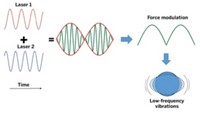Advertisement
Grab your lab coat. Let's get started
Welcome!
Welcome!
Create an account below to get 6 C&EN articles per month, receive newsletters and more - all free.
It seems this is your first time logging in online. Please enter the following information to continue.
As an ACS member you automatically get access to this site. All we need is few more details to create your reading experience.
Not you? Sign in with a different account.
Not you? Sign in with a different account.
ERROR 1
ERROR 1
ERROR 2
ERROR 2
ERROR 2
ERROR 2
ERROR 2
Password and Confirm password must match.
If you have an ACS member number, please enter it here so we can link this account to your membership. (optional)
ERROR 2
ACS values your privacy. By submitting your information, you are gaining access to C&EN and subscribing to our weekly newsletter. We use the information you provide to make your reading experience better, and we will never sell your data to third party members.
Analytical Chemistry
Following The Flow In Microchannels
Remote-detection MRI and NMR yield detailed information about chemistry and fluid flow within microscopic structures
by Jyllian N. Kemsley
October 8, 2010
| A version of this story appeared in
Volume 88, Issue 41
Detailed information about chemistry and fluid flow within microscopic structures such as microfluidic channels or blood vessels is now possible using a remote-detection approach to magnetic resonance imaging or nuclear magnetic resonance spectroscopy (Science, DOI: 10.1126/science.1192313). Developed in the lab of Alexander Pines at the University of California, Berkeley, remote detection involves encoding magnetic resonance information into the nuclear spins of the analytes flowing through a microfluidic channel or other structure. The information is then read at a detector stationed at the channel outlet. Pines, Vikram S. Bajaj, and colleagues have now extended the technique to enable the use of a standard macroscopic magnetic coil to obtain information on the flow and velocity of liquids in microfluidic devices down to a spatial resolution of 15 μm—something that previously would have required stationing microscopic coils along the device channels. This approach may also be used to obtain flow information for fluids in microporous materials or in blood vessels in vivo, the researchers say, or NMR chemical shifts for compounds involved in high-throughput studies of cellular metabolism or in small-molecule screening.





Join the conversation
Contact the reporter
Submit a Letter to the Editor for publication
Engage with us on Twitter